A Wreath
By George Herbert
A wreathèd garland of deservèd praise,
Of praise deservèd, unto Thee I give,
I give to Thee, who knowest all my ways,
My crooked winding ways, wherein I live,—
Wherein I die, not live; for life is straight,
Straight as a line, and ever tends to Thee,
To Thee, who art more far above deceit,
Than deceit seems above simplicity.
Give me simplicity, that I may live,
So live and like, that I may know Thy ways,
Know them and practise them: then shall I give
For this poor wreath, give Thee a crown of praise.
--------
We finished our nautical weekend Sunday with a trip to Solomons, where we went to the Calvert Marine Museum and Flag Ponds Nature Center following lunch at The Captain's Table in Solomons, where we had promised my younger son we would return for his birthday after we discovered their phenomenal crab soup the last time we were in Calvert County. I was expecting a small local museum like some of the marine museums we visited in the Outer Banks and on the Delaware shore, and we were all pleasantly delighted to discover that in addition to the lighthouse which we had known was there, the museum was far larger and more ambitious than we expected, with a ray and skate tank, a fossil-digging pit, several exhibits on local archaeology and paleontology, an otter tank, a boardwalk over a salt marsh, an exhibit on the Patuxent River and the War of 1812, a display of locally-manufactured ships and ship parts, a history of shipbuilding in Calvert County and an aquarium with local fish, jellyfish, seahorses, crabs and plants. The lighthouse was lovely -- there were four stories, all open to the public and all restored to 1906 condition when the granddaughter of one of the last lighthouse keepers who endowed the exhibit was born there. We also loved the salt marsh, with its fiddler crabs scuttling in the grass and snails clinging to the grasses.
Calvert Cliffs is home to both thousands of fossils and a nuclear power plant, which I toured when I was in high school but which has since been closed to the public for security reasons. The power plant is surrounded by a wildlife preserve and state park, so the area is exceedingly beautiful. Flag Ponds has a half-mile walk to the beach from the main parking lot through the woods, where little frogs and birds can be seen in abundance, and the beach itself is famous for the ease of finding shark's teeth, bone fragments and shell fossils (much larger fossils have been found in the cliffs themselves including whale and megalodon shark skeletons, though individuals are not allowed to dig there without a permit). The Chesapeake Bay was very warm, about 85 degrees -- by late afternoon the air was actually cooler -- and the salinity was low enough that we did not encounter any jellyfish, so we spent nearly two hours in the water, swimming and wading (the bottom is very level at Flag Ponds; one can walk quite a distance from shore with the water only at waist level) and then sitting in the middle of the banks of seaweed looking for shark's teeth. I found a couple, none perfect specimens but the kids didn't care. We left for home after 6, had random things for dinner at 8 since we were still somewhat full from crab soup and crab cakes at lunchtime, and watched Whale Rider on PBS since it seemed like a good night for it. We had read Harry Potter all the way up and back aloud, with interruptions from the kids with theories on who is the half-blood prince and whether Trevor is an animagus. *g*
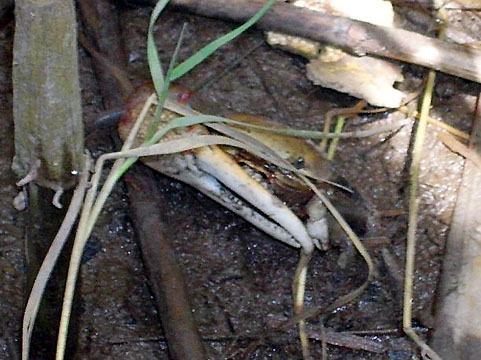
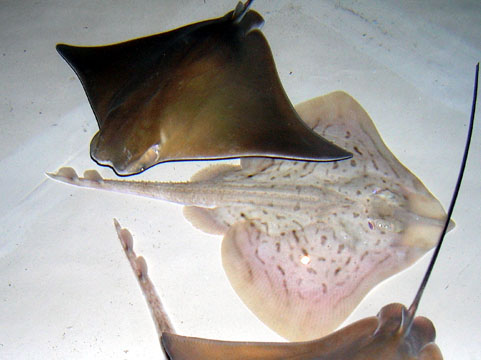
Cownose rays swim over a skate in the "Secrets of the Mermaid's Purse" exhibit tank.
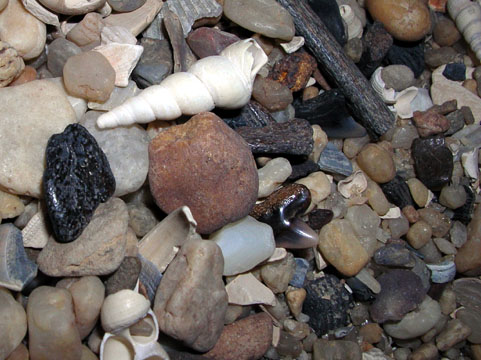
Shells, bone fossils and a shark's tooth in the fossil pit where kids get to find, identify and take home a treasure.
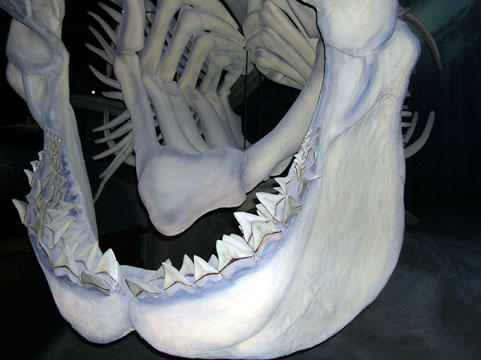
The mouth of an extinct shark, carcharodon megalodon. Those front teeth are larger than my hand.
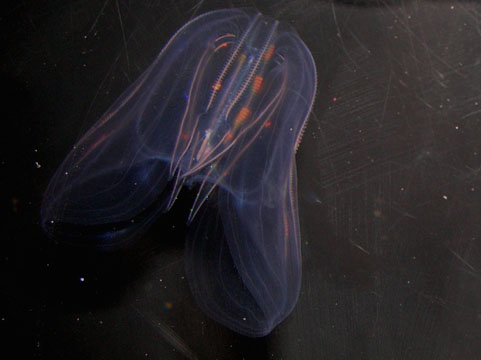
A sea walnut in the estuarial biology exhibit.
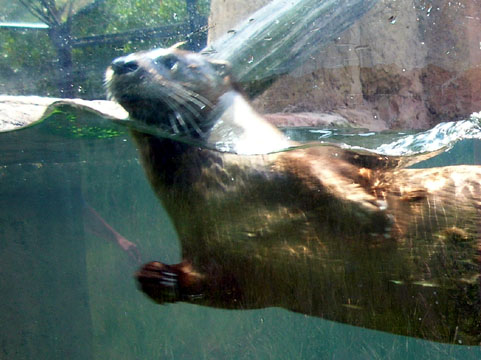
One of the otters (a pair, male and female) in the outdoor exhibit.
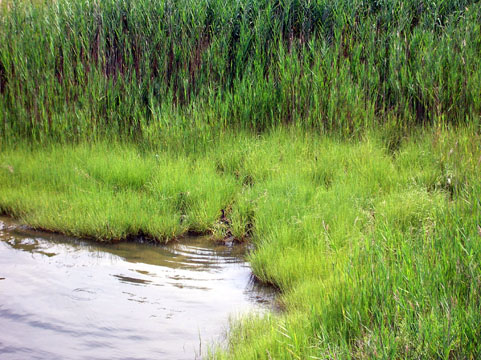
The edge of the salt marsh from the second story of the lighthouse. (I posted a photo of the lighthouse itself just a few days ago here.)
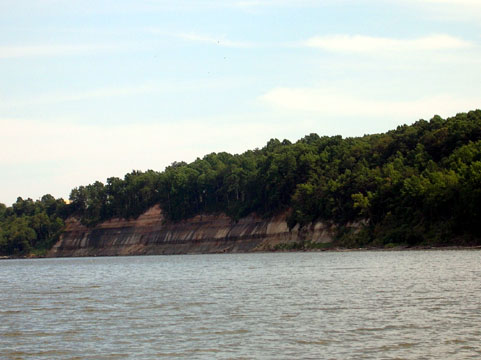
Calvert Cliffs. There are different layers of fossils in the different bands of deposits.

No comments:
Post a Comment